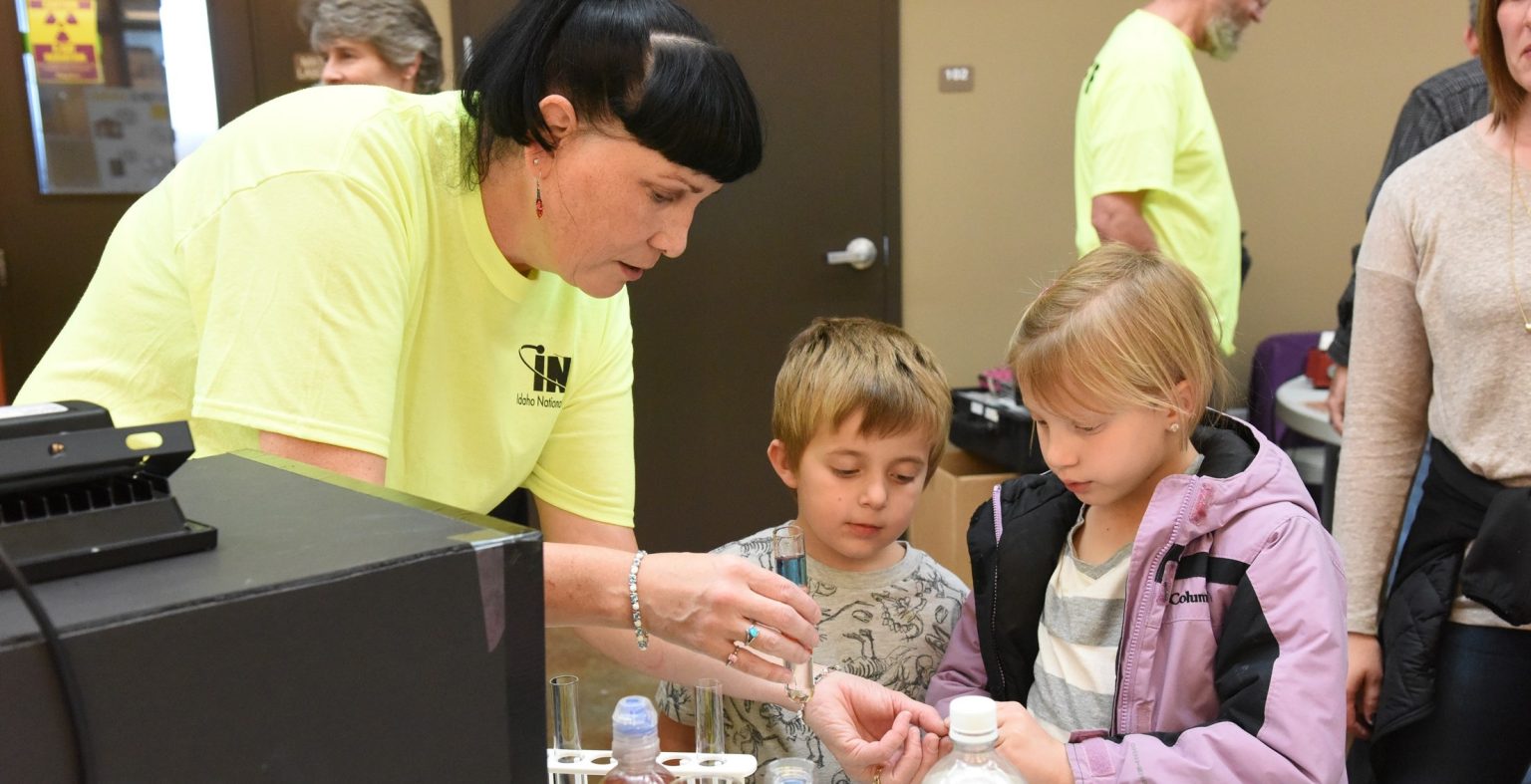Students from Dora Erickson Elementary School in Idaho Falls are likely to have their eyes and ears opened Oct. 13 at the Big STEM Event, part of Nuclear Science Week. After lunch, grades 1 through 3 will head across Garfield Street to Compass Academy for story time and a spooky science show.
First up will be a reading of “Marie’s Electric Adventure,” which came into being after the Duke Energy chapter of North American Young Generation in Nuclear (NAYGN) organized and wrote an elementary school-aged children’s book aimed at dispelling fears about nuclear energy. The characters in the book are named after important scientists in the history of nuclear: Marie Curie, Pierre Curie and Albert Einstein. The story describes a stormy evening in the life of a little girl named Marie. After the power goes out in her home, she is upset her night light stops working. She leaves her stuffed penguin, Pierre, behind as she and her trusty pup Einstein go find out where power comes from.
On their journey, Einstein and Marie discover the local nuclear power plant. Adam, a talking tree, explains there’s nothing wrong with the power plant, that a power line failure is the reason for the “broken” night light. Adam also explains the basics of nuclear power production to Marie. With her fears dissipated, Marie returns home to find the lights already back on.
When it comes to the Big Stem Event, the telling comes first and the showing comes second. Dr. Cathy Riddle, an INL researcher, not only has a lot to show but a dramatic way of presenting it. “Nuclear Forensics: The CSI Effect” is a presentation Riddle first unveiled in 2014. “Science can be magical, especially to children,” she said.
The lights go down and hooded figures come down the aisles carrying electric lanterns and goblets overflowing with mist. These mysterious characters talk a little bit about alchemy, the ancient practice that later became science. The lights come up, the robes are cast off and the hands-on demonstrations begin.
Riddle developed the show on her own time, but has received INL support from the director’s office down, she said. This has allowed her to bring as many “special effects” into the act as she can cook up. Whether it’s a density experiment or a fluorescent skeleton suit to go with the uranium glass she is explaining, she wants to make as big an impression as she can.
“You want to get kids interested in STEM (science, technology, engineering and math) at an early age, to give them an idea of how much fun it can be,” she said. “Then, later, when they might be struggling with the math, they can remember back to why they got interested in the first place.”
The newest part of this year’s presentation was unveiled in February, when the Museum of Idaho asked Riddle if she could do a show on the chemistry of explosions (she eagerly accepted). It involves hydrogen peroxide, sodium iodide dishwashing soap and a lot of bubbles.
“This show goes over really well with elementary-age kids,” she said. “It involves chemistry magic – a little bit of science and a lot of fun.”





